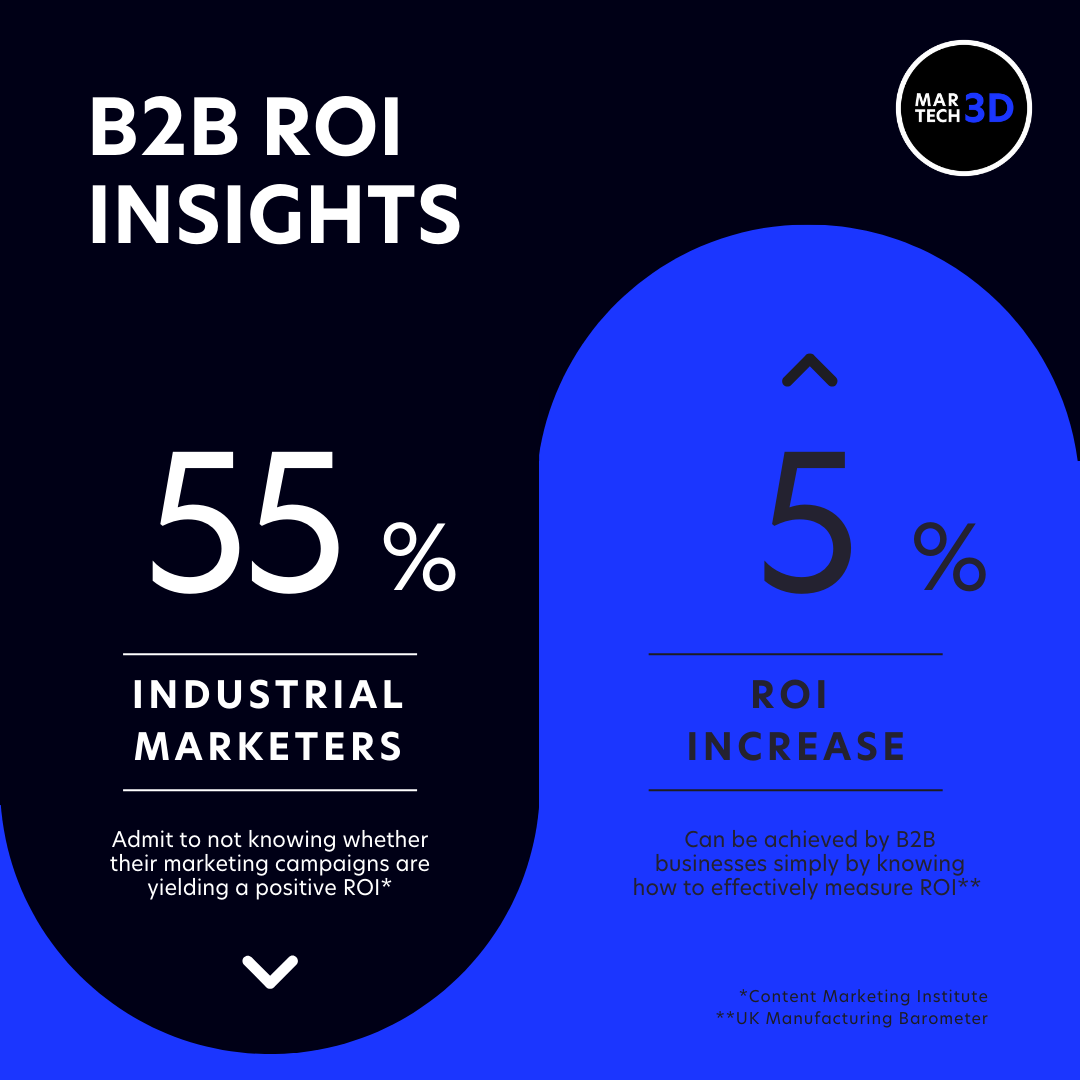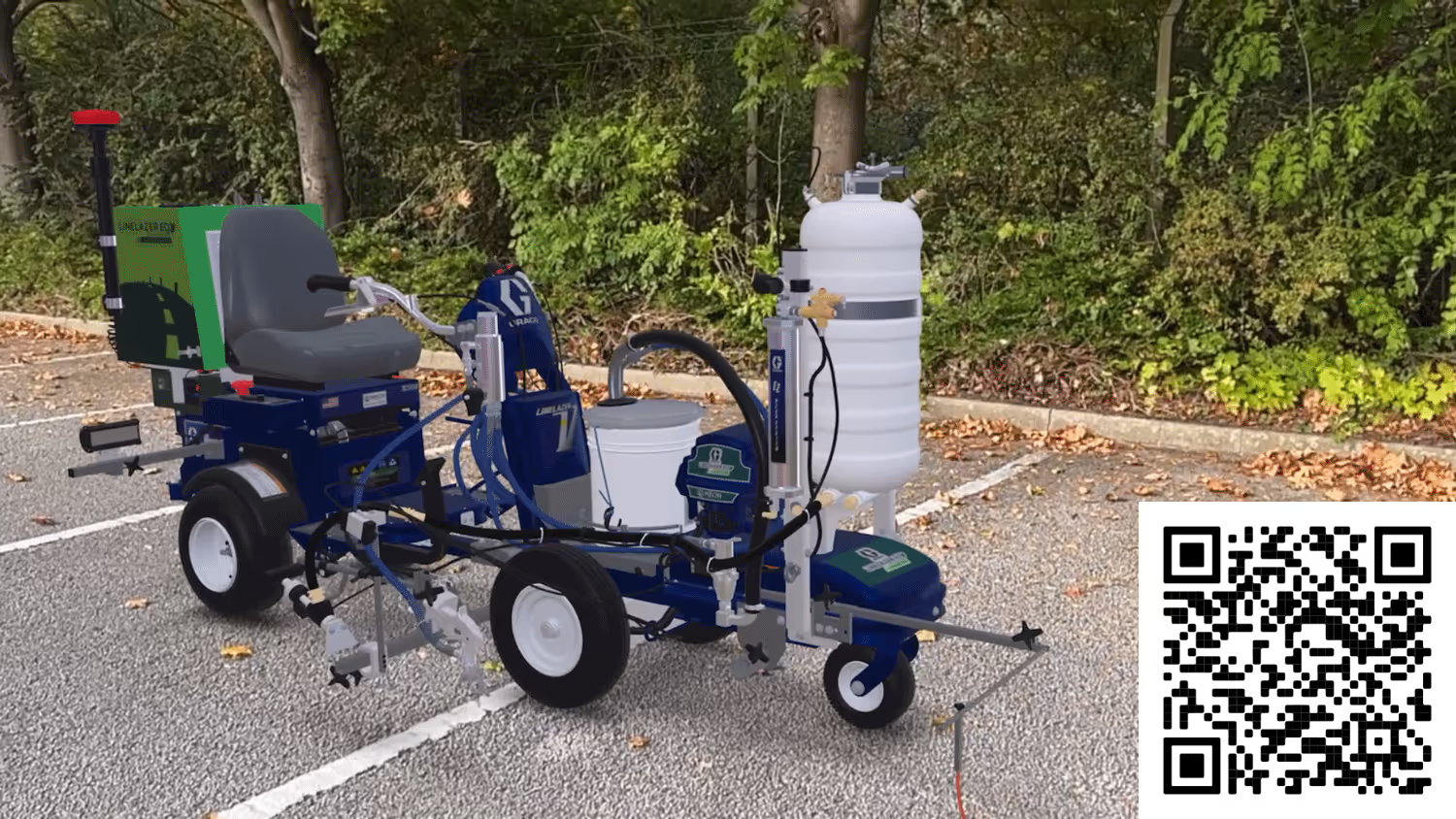April 15, 2025
Measuring ROI in Manufacturing Marketing: Why It Matters More Than Ever

The Reality
UK manufacturers are aiming high. Over half (52%) plan to grow by at least 20% within five years (Make UK). But the landscape isn’t making it easy.
The effects of the cost-of-living crisis, Brexit, COVID recovery, and rising global competition have all squeezed profitability. In fact, manufacturing margins have been falling since 2016, and the UK’s net rate of return is still barely above pre-pandemic levels (ONS).
That’s why measuring ROI — and acting on it — matters more than ever. Yet, more than half of industrial marketers admit they don’t actually know whether their marketing is generating a positive return.
And that’s a problem. Because according to the UK Manufacturing Barometer, manufacturers who actively measure ROI can improve profitability by up to 5%.
Why ROI Is So Hard to Pin Down
On paper, ROI sounds simple: return ÷ investment.
In practice, manufacturing marketing makes it complex.
- Long sales cycles: 27% of sales take seven months or more to close (CSO Insights). That’s a long time to connect a campaign to a conversion.
- Multiple touchpoints: From trade shows and email to distributor leads, tracking every step of a sale isn’t easy.
- Attribution challenges: When multiple campaigns overlap, it’s hard to see which one actually drove the sale.
- Scattered data: Sales, marketing, and customer information often sit in different systems — making a single ROI view difficult.
What to Measure
The basics haven’t changed, but the order of importance has:
- Revenue generation – Track which campaigns, assets, and products actually bring in the money.
- Cost analysis – Include media spend, labour, and tools to see where savings can be made.
- Time and resources – Measure how much team effort goes into each lead or campaign.
- Attribution – Know which touchpoints convert, not just which get clicks.
- Industry context – Brexit, supply chain shifts, and energy costs all affect ROI — measure within your real environment, not ideal conditions.
The Metrics That Matter
Manufacturing marketers are often swamped with acronyms, but these are the essentials:
- LTV (Lifetime Value): Total revenue from a customer over time.
- CAC (Customer Acquisition Cost): What it costs to win a new customer.
- CAC Payback Period: How long it takes to earn that cost back.
- CAC/LTV Ratio: How efficiently you’re converting spend into value.
- CPA (Cost per Acquisition): The spend per sale or qualified lead.
Together, they give a clearer picture of whether your marketing is generating real returns — or just impressions.
Improving ROI in a Tough Market
Measuring ROI isn’t just about reporting — it’s about learning what works.
Here are some proven ways manufacturers are improving results:
- Refine targeting. Use data to focus on the right industries and roles.
- A/B test content. Even small tweaks in messaging or visuals can improve performance.
- Adopt new tools. Manufacturers using 3D product images and interactive 3D models in marketing see stronger engagement and faster conversions.
- Automate repetitive work. Marketing automation can lift conversion rates by over 50% (Aberdeen Group).
- Align sales and marketing. Companies that do see 24% faster revenue growth (Forrester).
Why ROI Measurement Should Be Continuous
ROI isn’t a one-off calculation — it’s a feedback loop.
Track it, adjust, and track again. Avoid the two biggest pitfalls: chasing short-term numbers at the expense of long-term growth, and underestimating customer retention.
Remember: acquiring a new customer can cost five times more than keeping an existing one.
The Takeaway
In today’s climate, every marketing pound has to prove its worth. Measuring ROI gives manufacturers the visibility to spend smarter, build stronger campaigns, and defend every budget line with data.
And when your content includes high-performing 3D product images and 3D models, that ROI story becomes much easier to tell.






.jpeg)









